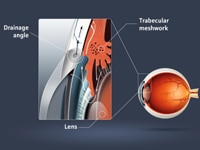Glaucoma, a group of eye conditions that can lead to irreversible vision loss, affects millions of people worldwide. One of the key factors contributing to glaucoma is increased intraocular pressure (IOP). While traditional treatments such as eye drops and surgery have been effective, recent advancements in medical technology have introduced a revolutionary approach called laser surgery for eye pressure. This minimally invasive procedure offers a promising alternative for managing IOP and controlling the progression of glaucoma. In this article, we will explore the benefits, procedure, and potential outcomes of laser surgery for eye pressure.
Benefits of Laser Surgery
Laser surgery for eye pressure, also known as laser trabeculoplasty, offers several benefits over conventional treatment methods. Firstly, it is a safe and minimally invasive procedure that can be performed on an outpatient basis, eliminating the need for hospitalization. Secondly, the recovery time is significantly shorter compared to traditional glaucoma surgeries. Additionally, the procedure is precise and targeted, selectively treating specific areas of the eye to improve drainage and reduce IOP. Moreover, laser surgery for eye pressure can potentially reduce or eliminate the reliance on daily eye drops, enhancing convenience and adherence to treatment plans.
The Procedure
During laser trabeculoplasty, an ophthalmologist uses a specialized laser to treat the drainage angle of the eye. There are two main types of laser trabeculoplasty: argon laser trabeculoplasty (ALT) and selective laser trabeculoplasty (SLT).
ALT involves applying a laser beam to the trabecular meshwork, the part of the eye responsible for fluid drainage. The laser stimulates the meshwork to improve fluid outflow and reduce IOP. SLT, on the other hand, uses low-energy laser pulses to target specific cells in the meshwork, leaving surrounding tissue intact. This approach causes less thermal damage and allows for repeated treatments if necessary.
Both ALT and SLT are performed on an outpatient basis. Before the procedure, eye drops are administered to numb the eye and minimize discomfort. The laser is then applied to the targeted area, which usually takes only a few minutes. Patients may experience a mild stinging or tingling sensation during the procedure. Following the surgery, patients can resume normal activities with minimal restrictions.
Potential Outcomes and Considerations
Laser surgery for eye pressure has shown promising results in effectively reducing IOP and managing glaucoma. Studies have indicated that laser trabeculoplasty can lower IOP by approximately 20–30%, thus reducing the risk of vision loss. However, it is important to note that the success of the procedure varies among individuals, and the effects may diminish over time, requiring additional treatment.
Like any medical procedure, laser surgery for eye pressure carries potential risks and side effects. These may include temporary inflammation, eye redness, and a temporary increase in IOP immediately after the surgery. Rarely, more serious complications, such as infection or damage to the drainage system, may occur, although these are uncommon.
Before considering laser surgery for eye pressure, it is crucial to consult with an experienced ophthalmologist who can assess your condition and determine the most suitable treatment plan. They will consider factors such as the severity of glaucoma, individual health history, and overall eye health to provide personalized recommendations.
For More Info:-






Comments